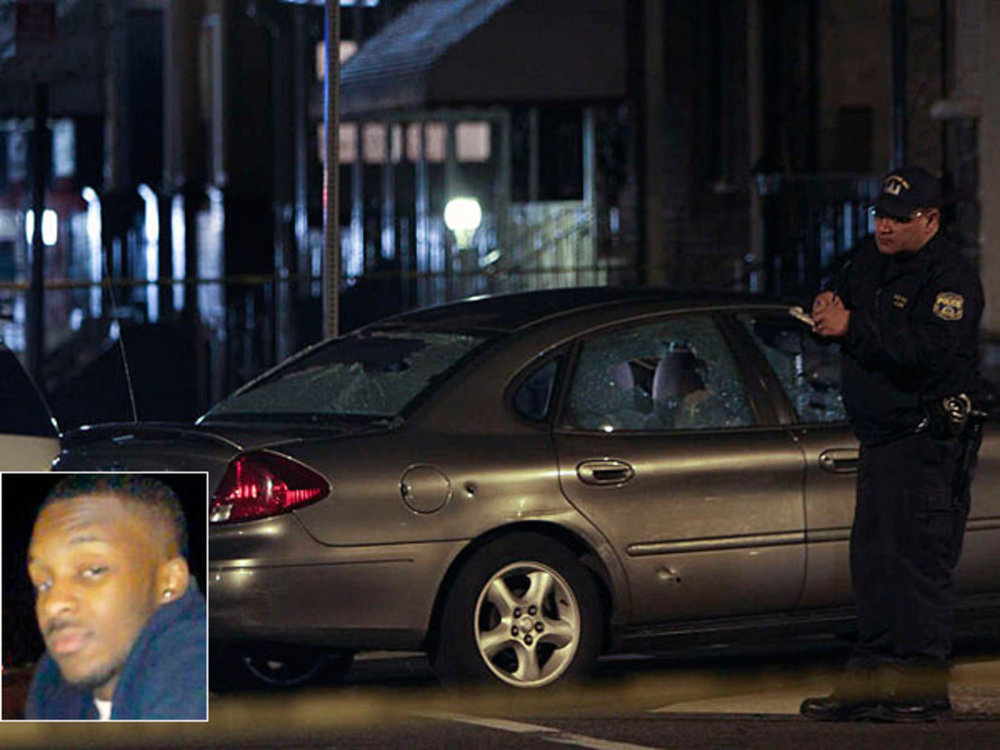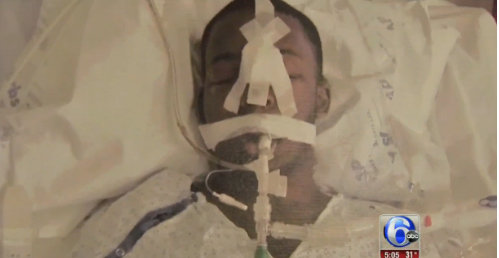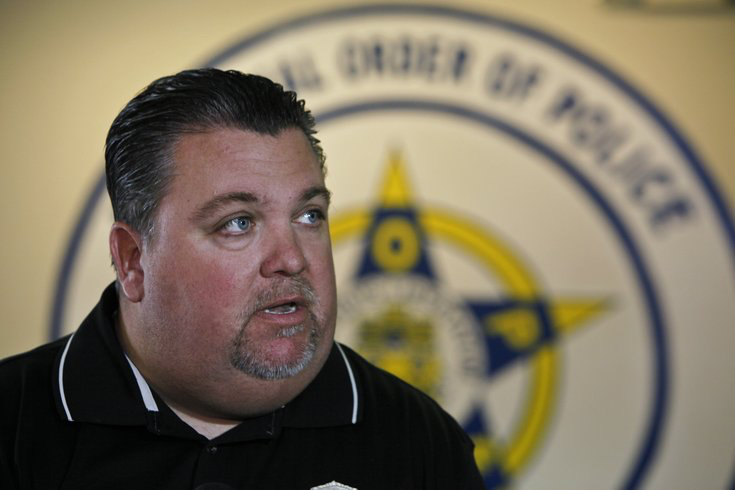Only Lies & No Justification for White Philadelphia Cops to Shoot 14x Into Black Man's Car: $4.4 Million Settlement

From [HERE] and [HERE] The city of Philadelphia has agreed to pay $4.4 million to settle two lawsuits after an unarmed black man was shot repeatedly by 2 white cops in 2014. The sum is the largest shooting-related police settlement in the department's history and closes civil litigation from an incident the city called a "tragic misunderstanding."
Philippe Holland has bullet fragments in his brain and a permanent seizure disorder. The fragments lodged in his jaw from when Philadelphia police officers fired at him on an April night in 2014 were removed only last year.
Holland was 20 and taking courses at Delaware County Community College in April 2014, working two jobs on the side: a gig at the airport Au Bon Pain and a pizza delivery job he'd had for only three weeks, at a neighborhood shop in West Philadelphia called Slices & More.
A round 10 p.m. on April 22, 2014 undercover white police officers Mitchell Farrell and Kevin Hanvey, were responding to reports of shots fired in the area when they approached Holland near 51st Street and Willows Avenue. The cops were in plainclothes and driving an unmarked vehicle.
Holland had just made a food delivery, when he said he noticed two people [the cops] approaching him suspiciously. He entered his Ford Taurus from the passenger side in an attempt to conceal himself from the oncoming men who he did not know were police officers, according to the two lawsuits he filed, one in state court [complaint PDF] and a separate action in federal court.
The plainclothes officers never identified themselves, and Holland thought he was about to be the target of a robbery after being shone in the face with a flashlight and seeing one of the men holding a gun.
In response, he quickly took off in his car. That's when police fired a barrage of bullets at his car, according to Holland's attorney Tom Kline.
Bullets struck Holland in the forehead, neck and leg. He was left in critical condition. Holland said he tried to pull out of the parking space. That's when the officers opened fire, he said. He remembers the pain of a bullet coursing into his right thigh, the crunch of the car windows breaking, and the smack of the Taurus into a fence across the street. The officers had fired 14 shots at his car. He was admitted to the hospital with life threatening injuries and was in crirtical condition. [MORE]

Naturally the police officers Hanvey and Farrell offered investigators a different version of events. Hanvey and Farrell told investigators they approached Holland because they saw him walking past a Chinese restaurant on 51st Street, and they asked a witness on the street where the gunshots came from. They said the woman pointed toward Holland and said the shots came from where he was walking.
However the woman told invstigators she had pointed toward the Chinese restaurant and never saw Holland. And the store's surveillance camera did not capture Holland nearby, a police investigation found.
The officers also claimed they yelled "Stop! Police!" several times at the deliveryman.
But Holland said they never identified themselves, and three independent witnesses said they never heard the officers shout "Police!" or otherwise identified themselves either.
They also originally claimed that he drove quickly toward the officers, who then opened fire. Hanvey and Farrell said they feared for their lives when Holland peeled out of his parking spot. Farrell said in a deposition that there was no time to get out of the way of the car.
But investigators found that just before the shooting, Officer Hanvey had placed himself in front of Holland's car, and that Farrell had stationed himself "in the middle of the street with no cover or concealment available to him."
"An officer should never unnecessarily place themselves or another person in jeopardy in an attempt to stop a vehicle," the Internal Affairs memo noted. "There was no other threat posed by Holland other than the moving vehicle."
In other words, the cop's version of events was inaccurate or untruthful.
As a legal matter the police had no probable cause to stop Holland as no crime was going on at the time and police had no articulable reason to believe that Holland was involved in criminal activity. As stated, the cops only saw a Black man walking down the street. The cops had no description of any particular suspects because none had been provided. The cops also never claimed to see any weapons - Holland was unarmed.
The department's use-of-force guidelines dictate that officers "shall not discharge their firearms at or from a moving vehicle unless deadly physical force is being used against the police officer or another person present, by means other than the moving vehicle." [MORE]
"There was no justification, no probable cause, and no basis for shooting 14 bullets into Holland's vehicle," Kline said. "It will hopefully never occur again if policies, practices and procedures are correctly followed."
"The city settled this case considering a number of factors, including the severity of Mr. Holland's injuries sustained during this unfortunate and regrettable series of events," mayoral spokesman Michael Dunn wrote in an email, "and the city's potential exposure at trial."

Based on the facts, among other things, the cops could have been charged with attempted murder, attempted manslaughter and/or aggravated assault. It takes a high degree of indifference to life to open fire 14 times into a moving vehicle with no legal reason for doing so. Any reasonable officer under the circumstances would know that such action most likely would lead to death. Then they lied about it. However, the District Attorney's Office declined to press charges in the case. The department's Use of Force Review Board concluded that Farrell and Hanvey had violated department policy.
A police spokesman said that the two have been on administrative duty since the shooting and that although the incident happened nearly 3 years ago, "discipline is still pending."
John McNesby [in photo], president of Fraternal Order of Police Lodge 5, declined to comment, saying the department's internal matters regarding discipline had not yet been resolved.
The city has initiated new training for plainclothes officers so that suspects are more readily aware they are being questioned by undercover cops, in addition to a training video all undercover officers must watch before heading out on an assignment.
Kline said he hopes the new reforms in the police department that were sparked as part of the settlement become known as the "Holland protocol," including the new training and increased awareness of a potential suspects' civil rights. Police officials say those measures were already being taken as part of the U.S. Department of Justice's suggested reforms concerning the Philadelphia Police Depmartment's use-of-force policy.
"We will strive to ensure that tragedies such as this do not happen again in our city," City Solicitor Sozi Tulante said in a statement, a sentiment echoed by the police department.
"Our police department exists to protect and serve all people who live, work in, or visit Philadelphia and greatly values your trust," said Police Commissioner Richard Ross. lol.
"The City of Philadelphia strives to earn, maintain, and build that trust by ensuring that police act within the scope of their lawful authority and hold paramount the civil rights of those they serve."